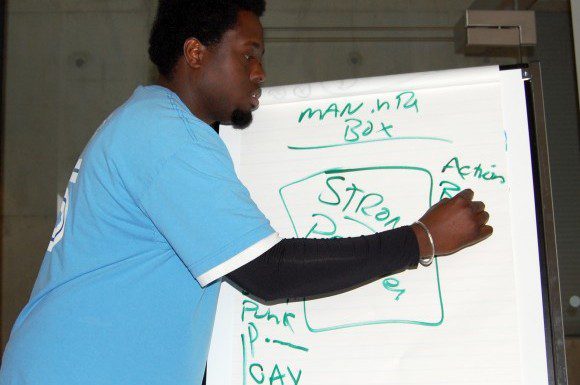Some people work just to pay the bills. Others, work to keep busy.
But John Sawdon, like many social workers, does it for a different reason – to get at-risk youth to realize their potential.
Sawdon, the executive director of the Canadian Training Institute, runs Breaking The Cycle, a workshop for youth from Scarborough and Rexdale who have been involved in gangs.
“We want to get kids to dream again,” Sawdon said. “To get kids to dream of a different life again. To begin to think ‘maybe I can go back to school; maybe I can accomplish something.'”
Sawdon has been doing social work for over 30 years, working with marginalized youth in community mental health agencies and corrections institutions.
He has a diploma from Humber College in human resources, a bachelor of psychology degree from York University, and a joint Master’s degree in applied behavioral science from American University and NTL Institute.
According to Sawdon, getting at-risk youth to discover their potential is not always easy. They feel isolated due to hardships they’ve experienced such as poverty, family instability or academic failure.
The key step in getting youth to keep their dreams alive is by instilling a sense of self worth, he said.
“They need feedback from others that tells them ‘You know what, you’re worthwhile'” he said. “The message they’ve had in the past is that they’re not worthwhile, that they’re never gonna make it.”
Jabari Lindsay, coordinator of Breaking The Cycle, said that at-risk youth put up a ‘shield,’ a defense mechanism against a society which they don’t feel a part of.
For any youth worker, it’s important to overcome this shield to get at-risk youth to change their path.
“For a lot of the youth I work with, joining a gang is the ultimate shield,” Lindsay said.
This shield is often raised because the youth feel disconnected from society, he said. Sometimes, the most important part of penetrating that shield is simply showing the youth that someone cares, he said.
“Once upon a time I felt like that,” Lindsay said. “I had a cousin that reached out to me when I needed someone to be there. If that person hadn’t been there,” Lindsay said, “I probably would have fallen through the same cracks a lot of the kids did.”
David Watkins is a teacher at Weston Collegiate Institute. Many of the youth he works with could be considered at-risk. For him, building a relationship is critical when working with at-risk youth.
“One of the primary ways of engaging young people is to give them the environment where they can lower those shields,” Watkins said. “But to do that, you have to approach them in a way that will foster that sense of safety.”
Watkins said that it’s important to give the youth a chance to talk instead of always talking to them. It is also essential that they realize what they say matters, and that they matter.
“What’s optimum is that they feel they can come to you as somebody they trust and that they can count on you to be there for them,” he said.
However, as Lindsay realizes, the reality when working with youth involved in gangs is that often the support they need comes too late. For Lindsay, it’s all worth it if he can get even one youth to realize the street isn’t their only option.
“Even if it’s a guy who goes to jail, but calls to say, ‘thank you…I tried, but it was too late,’ it’s about being there for that moment when they need you,” Lindsay said.
Filed by Omar Mosleh
